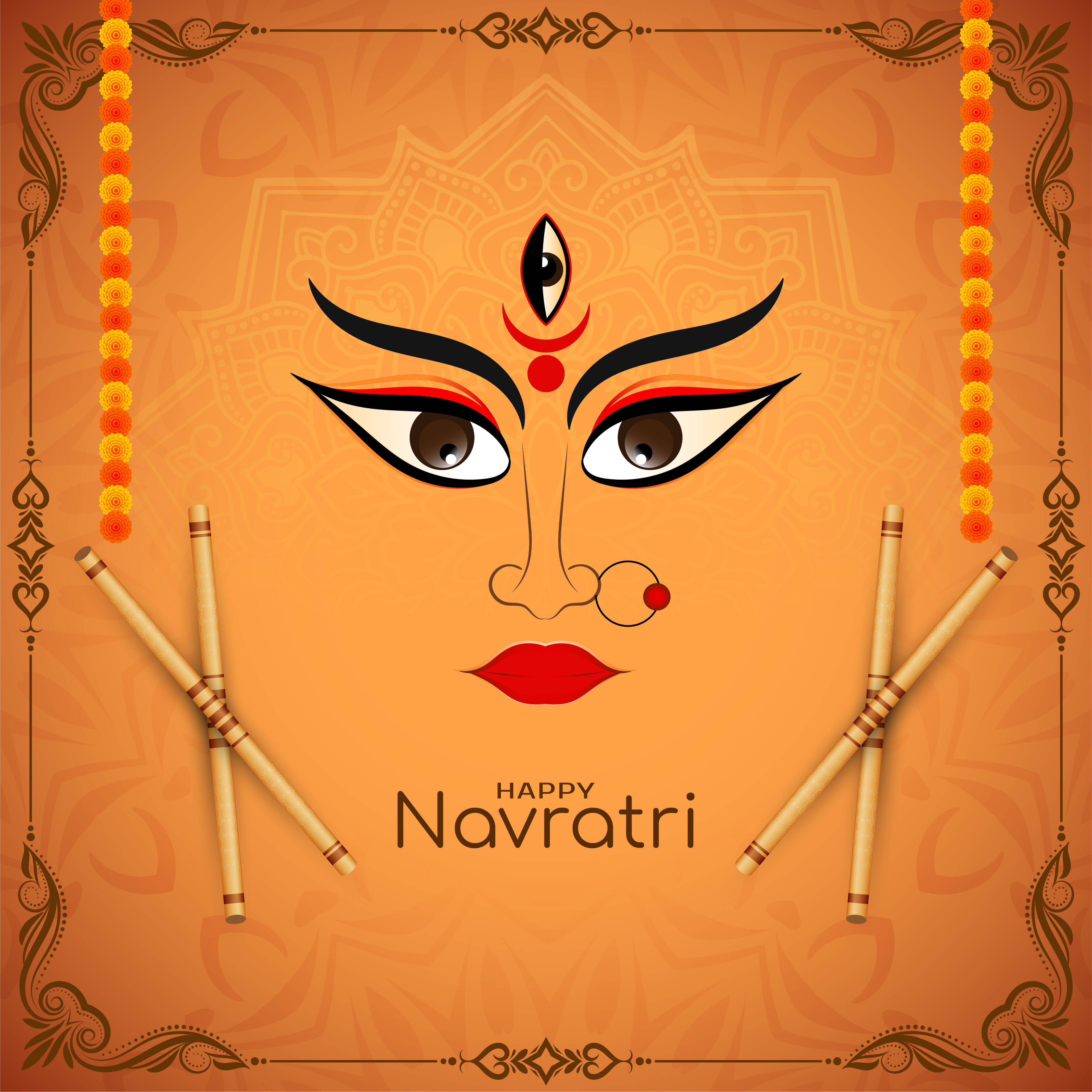Celebrate Navratri as per the Hindu Ritual.
- Kalash Sthapana (Ghatasthapana)
- Daily Puja and Aarti
- Fasting
- Nine Forms of Goddess Durga Goddess Durga's nine forms are dedicated to each day of Navratri.
- Shailaputri (Day 1) - Worship with flowers, especially red.
- Brahmacharini (Day 2) - Offerings of sugar or fruits.
- Chandraghanta (Day 3) - Milk and sweets like kheer.
- Kushmanda (Day 4) - Offering fruits and coconuts.
- Skandamata (Day 5) - Bananas as offerings.
- Katyayani (Day 6) - Honey is offered to the goddess.
- Kalaratri (Day 7) - Offering jaggery or sweets.
- Mahagauri (Day 8) - Offer coconut or halwa.
- Siddhidatri (Day 9) - Offer sesame seeds or sweets made from them.
- Garba and Dandiya Raas
- Kanya Pujan (Kanjak Puja)
- Vijayadashami (Dussehra)
- Decorate the Home
- Charity and Feeding the Poor
Navratri is a vibrant and widely celebrated Hindu festival dedicated to worshiping the Goddess Durga in her nine forms, symbolizing the victory of good over evil. It lasts for nine nights and ten days, usually falling in the month of September or October, depending on the lunar calendar. Here’s how you can celebrate Navratri in line with traditional Hindu rituals:
Date: On the first day of Navratri.
Ritual: A kalash (holy pot) is placed at the center of the puja area. It is filled with holy water, covered with mango leaves, and a coconut is placed on top. This kalash symbolizes the presence of Goddess Durga. After this, you light an oil lamp that should burn for the entire nine days.
Morning and Evening Puja: Every day during Navratri, devotees perform prayers (puja) in the morning and evening. The puja includes offering flowers, fruits, sweets, and lighting incense sticks. Recite Durga Chalisa, mantras, and other sacred texts.
Aarti: Special aartis are sung at the end of each puja to invoke the blessings of the Goddess.
Navratri Fasting: Many devotees observe fasts during the nine days. You can choose to fast for all nine days or only on the first and last days. During the fast, you avoid grains and consume fruits, milk, and specific fasting foods like sabudana (tapioca) or buckwheat flour (kuttu ka atta).
Break Fast with Satvik Food: At the end of the day, you can break your fast with light, satvik (pure) food that excludes onion and garlic.
Traditional Dance: In the evenings, Garba and Dandiya, traditional folk dances from Gujarat, are performed in large gatherings. Garba involves dancing in circles around the deity, while Dandiya is a more energetic dance using sticks. Participants often wear colorful attire.
Music and Devotion: The songs are usually devotional, praising the Goddess, and often accompanied by live music or recorded devotional tracks.
Eighth or Ninth Day (Ashtami or Navami): On this day, young girls, considered to be incarnations of the goddess, are invited to homes, worshipped, and offered special meals and gifts. The girls, known as Kanjak, represent the divine feminine power.
Day 10: The last day of Navratri is Vijayadashami, which celebrates Lord Rama’s victory over Ravana, symbolizing the triumph of good over evil. It is also considered an auspicious day to begin new ventures or projects.
Rangoli and Lighting: Homes are decorated with rangoli (colorful patterns) at the entrance, and oil lamps or diyas are lit each evening to welcome the goddess. Devotees often decorate the puja area with flowers, especially marigold, and use red or yellow cloth as the backdrop for the idols or pictures of the goddess.
Many people believe in doing good deeds during this period, such as feeding the needy, donating clothes, or giving food grains to ensure blessings from the Goddess.
By observing these rituals, you can celebrate Navratri with devotion, joy, and the spirit of togetherness.

